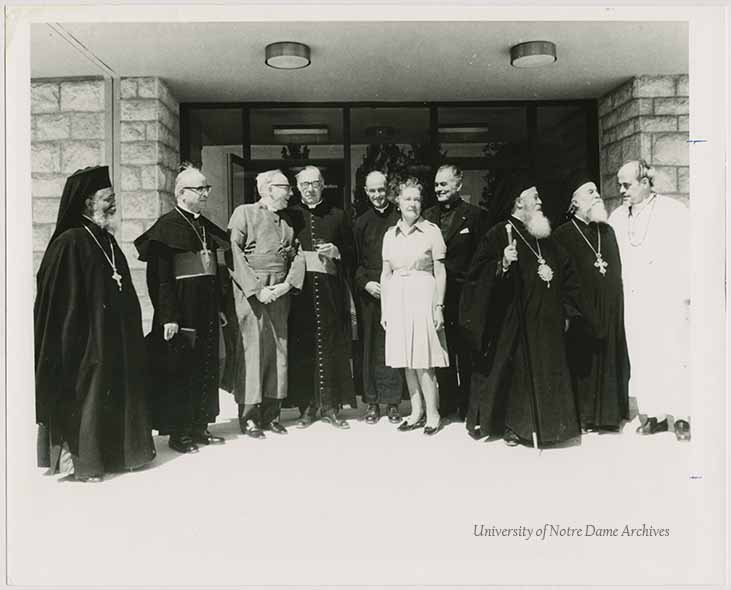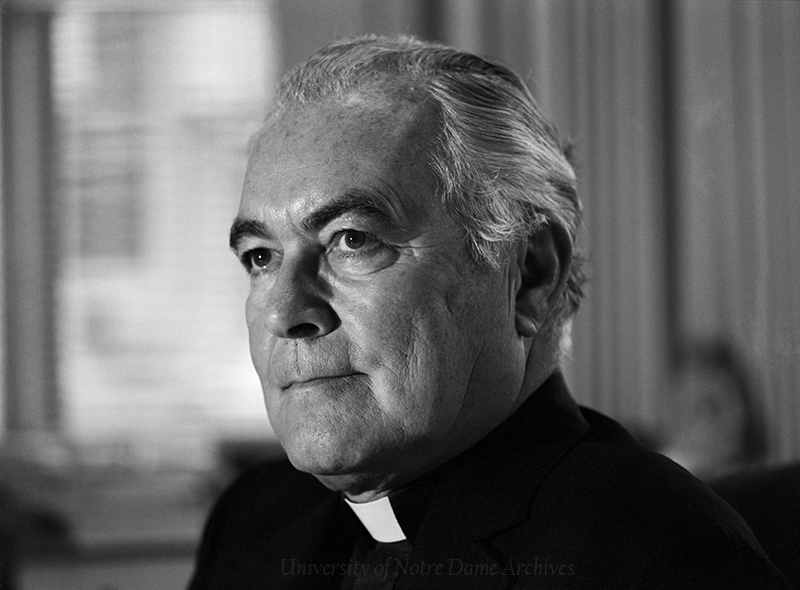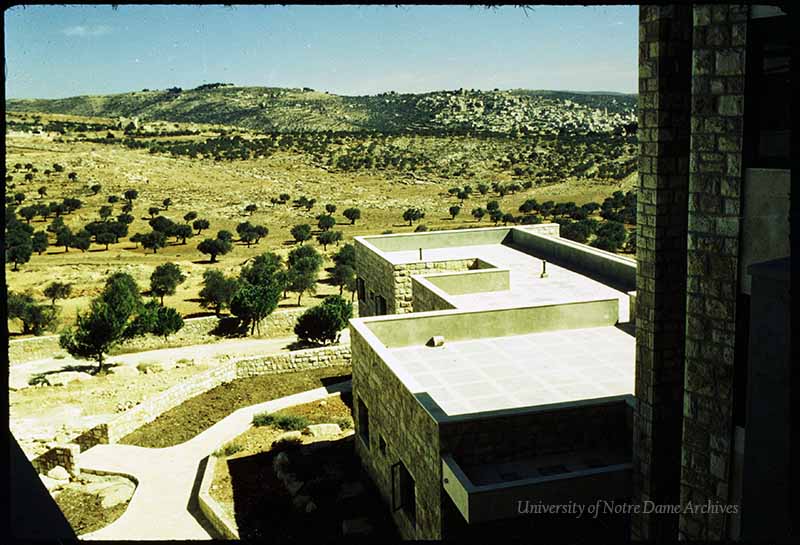Tantur Ecumenical Institute
In early 1960, when Pope Paul VI was Giovanni Battista Cardinal Montini, Father Hesburgh asked him to give the homily at the baccalaureate Mass prior to Notre Dame Commencement in May. During his visit at Notre Dame that spring, the two became good friends. Three years later, in April 1963, in the midst of the Second Vatican Council, the newly elected Pope Paul VI wanted to speak with Father Hesburgh.
Pope Paul VI had a dream of uniting all Christians in a very real and tangible way, and he wanted Father Hesburgh to play a part in realizing this dream. The Pope and others who were part of the Second Vatican Council voiced a desire to continue dialogue started during Vatican Council II. Father Hesburgh recalled the Pope saying that "one of the greatest blessings of Vatican Council II was that it had brought him in close contact with many Protestant theologians and clerics whom he grew to like and respect." Pope Paul VI envisioned "a permanent ecumenical institute, to which the different branches of Christianity could send representatives to study together and further the cooperation of all religions of the world."
Father Hesburgh recalled the Pope smiling and saying, "Now that you're the head of the Federation of Catholic Universities, it would be nice if you could take on the responsibility for this ecumenical institute for me." Father Hesburgh claimed to know little about ecumenism, but it didn't take him long to see the beauty in the project and agree to take it on.
The following January of 1964, Pope Paul VI made a pilgrimage to the Holy Land. He went to pray together with Patriarch Athenagoras of Constantinople. On January 5, the two embraced at the Mount of Olives, ending 500 years of silence between the East and the West, a remarkable event. The Pope decided that Jerusalem would be the perfect neutral ground for the institute.
Father Hesburgh and his friend Pierre Duprey, a Catholic priest who was present and played a key part in the meeting of Pope Paul VI and Patriarch Athenagoras, took on the search for a location within Jerusalem. They drove all over Jerusalem, looking at various sites, but eventually stumbled upon the ideal location. Father Hesburgh describes the land in God, Country, Notre Dame:
We came to a remote hilltop ringed with olive and pine trees. On the hill were some old, deserted buildings, the remains of a hospital and a school. Pierre explained that the site had been developed at least a hundred years before by some Austrian Knights of Malta, led by Count Caboga, who was buried there. The site, covering thirty-five acres, was the highest point between Jerusalem and Bethlehem. From the hilltop you could see both Jerusalem, which was about a ten-minute drive to the north, and Bethlehem, about a five-minute drive to the south. The Mediterranean sparkled off in the distance to the west. To the east you could just make out a scattering of Arab villages. The road that Joseph and Mary took to Bethlehem ran along one side of the property. On the other side was a new road between the two cities.
The property, called Tantur, was owned by the Knights of Malta, but Salesian Fathers lived there and harvested olives. In December of 1964, the Vatican purchased the property at Tantur from the Knights of Malta. It then leased the property to Notre Dame for the next fifty years for one US dollar per year.
Father Hesburgh was put in charge of an international ecumenical advisory board as part of the project. The board consisted of representatives from all different Christian churches. This board met regularly to set up programs, select faculty and staff, and design the buildings and grounds. Funding for the project was provided by the generosity of Mr. and Mrs. I. A. O'Shaughnessy. It took several years to open due to unrest in the area, but it eventually did in 1972.

Source: University of Notre Dame Archives.
The expansive property on the hill includes a spacious building complex with classrooms, seminar rooms, an auditorium, administrative offices, a large dining room, private study rooms, and a chapel. Tantur also has one of the largest theological libraries in the region. Guests have access to comfortable apartments on the property, as well as the courtyard with fountains and gardens with fruit and olive trees. The Tantur website describes the institution:
At any given time, Tantur is home to young children (whose parents are researching and/or writing), undergraduate students, graduate students, adults in the middle of their careers and those who have completed their professional work. Community emerges as we eat, study, tour and pray together.
Tantur is a welcoming refuge of unity and respect. According to its website, "It is a place of encounter, of pilgrimage, of healing and reconciliation. It is an oasis of learning, community, and hospitality."
For the past 45 years, Tantur has welcomed thousands of people, held numerous lectures by people of all faiths, and has been the center of important Christian and interfaith dialogue, with the ultimate goal of unity, peace, and understanding. "Tantur's vision of community is rooted in hospitality to the other without defining who the other is. The other may be a bishop or a university president, or an atheist or agnostic."
The Institute's website documents the following aims of Tantur:
- We assist the search for Christian unity and interchurch harmony among diverse Christian communions.
- We seek a broader and deeper understanding of each other's faith and traditions, ethics and social witness, liturgies and pieties.
- We explore the relationships between Christians and peoples of other world faiths, especially Jews and Muslims.
- We participate in the search for world peace and justice, through theological study and through exploring human rights and conflict resolution in different religious and social contexts.

